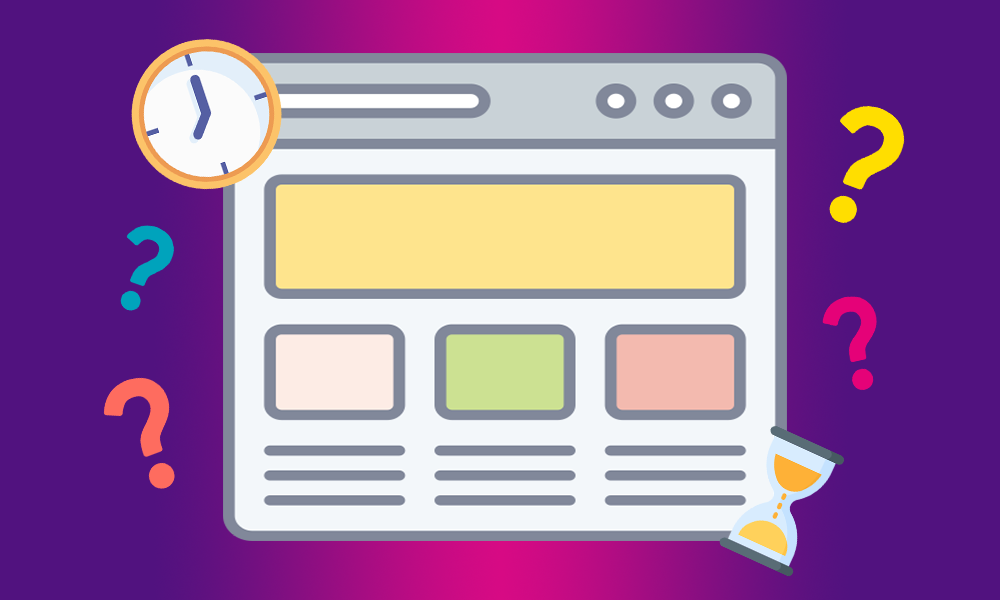
In today’s digital age, having a strong online presence is crucial for individuals and businesses alike. Building a website is akin to constructing a digital storefront or a platform through which you can communicate your identity, brand, and offerings to the world. Just as a physical storefront requires careful planning and construction, websites often need a flushed out wireframing process–often taking 8-15 hours–so that difficulties during the development stage are kept to a minimum.
However, there are certain intricacies among the different types of websites that also need attention. In this article, we delve into those certain intricacies of website development, shedding light on the time frames involved and exploring the different types of websites that cater to varying needs and goals.
Approaching website development requires a strategic mindset, akin to investing in a venture with long-term implications. It’s crucial to allocate resources wisely, focusing your time and energy on the core aspects of the website. While a “coming soon” page may be necessary, investing excessive time and money in its creation might not yield substantial returns.
Remember, your website is your digital voice, shaping perceptions and interactions with your audience. Therefore, consider long-term goals, maintenance requirements, and your target audience when embarking on the website-building journey. On average, building a website can take anywhere from 2 to 6 months, depending on its complexity and customization requirements. Let’s break down the timeframes for different types of websites.
Basic Custom Websites
Firstly, let’s consider a basic custom site. This type of website involves custom design and development tailored to specific requirements. It’s ideal for businesses or individuals looking for a unique online presence that reflects their brand identity and increases their marketing. Building a basic custom site typically takes between 4 to 8 weeks, with a total investment of 40 to 80 hours.
This time frame allows for the careful crafting of design elements, functionality, and user experience to create a seamless and engaging website. It’s extremely crucial to not rush the development stages for custom websites as they frequently involve custom codes which are often liable to breaking, leading to expensive problems in the future.
WordPress Websites

Next, we have WordPress websites which are suitable for blogs, portfolios, and small business websites. WordPress offers a flexible platform for website creation, with numerous themes and plugins available to streamline the development process. And while utilizing a template can significantly reduce development time, saving up to 5 hours, their development still needs to be approached thoroughly and using a wireframe for thisprocess is recommended.
Building a WordPress website typically takes between 4 to 8 weeks, with a minimum time investment of 20 hours but can easily go up to 40 hours. This is because WordPress websites, despite using templates, often need to go through an optimization phase which would require one to dive into code.
Moreover, template websites sometimes don’t provide consumers with the best user experience which is why customization and testing phases might be necessary. So while the developer might need to know some HTML coding processes, WordPress is still relatively straightforward which means that it’s good for content management on the client’s side and is less risky.
E-Commerce Websites

Lastly, let’s discuss e-commerce websites. Compared to a basic custom website and a WordPress website, e-commerce websites are made for selling things and accepting payments. Because of this, building an e-commerce website involves additional complexities, such as integrating payment gateways, encrypting data, and ensuring robust security measures.
Effective communication is paramount throughout the website development process. Regular back-and-forth exchanges between developers and clients ensure that the website meets expectations and aligns with the desired objectives. While the initial stages of website building may seem relatively quick, thorough refinement can add significant time to the overall process, often requiring 12 to 14 hours or longer on the testing stage alone.
As stated before, this type of website requires careful consideration of financial transactions and customer data protection, meaning that these development and testing stages cannot be rushed as a compromised security measure can lead to lives being ruined and lots of damage expenses. Building an e-commerce website typically requires a minimum time investment of 40 hours; however, the total time frame can vary depending on the scale of the project, with larger e-commerce websites taking several months to complete. E-commerce websites are by far the most complicated among the three types of websites talked about in this article.
Conclusion
In conclusion, building a website is a multifaceted endeavor that demands careful planning, execution, and ongoing maintenance. By understanding the timeframes involved and the different types of websites available, individuals and businesses can make informed decisions that align with their goals and aspirations.
Whether embarking on a basic custom site, a WordPress blog, or an e-commerce platform, all should be approached with mature strategies that include wireframes and testing phases which requires time and money; however, investing in a well-crafted website is a strategic move that can yield lasting benefits in the digital landscape.

